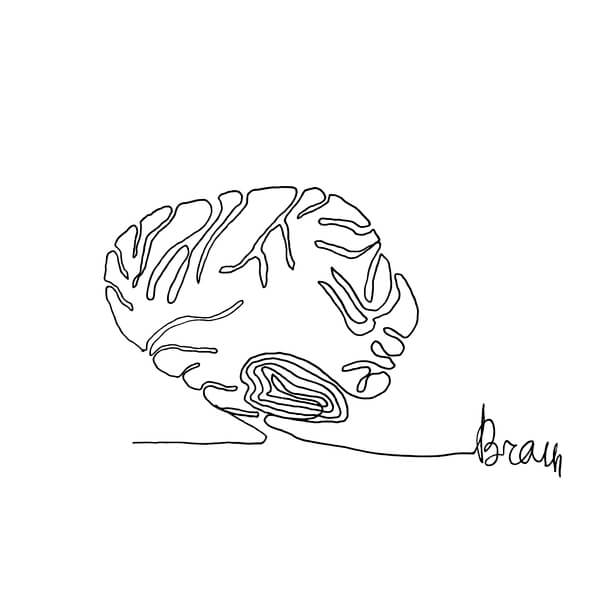I wrote an earlier version of this article about improving student behavior that was published in the Attachment & Trauma Network’s December (2015) Therapeutic Parenting Journal. That issue focused on creating trauma-sensitive schools. In 2020, I updated that article for this post.
Understanding how childhood trauma impacts student behavior and learning in schools is critical. What, though, should educators do in trauma-sensitive learning environments to manage student behavior if they’re not relying on behavior modification plans like sticker charts? It’s a question that folks who are learning about building trauma-sensitive schools often ask me. Keep reading to understand my response.
Two Questions To Ask Yourself
First of all, behavior modification plans, such as sticker charts and Positive Behavioral Interventions and Supports (PBIS) are rooted in behaviorism, which emphasizes controlling a person’s behavior from the environment through use of punishments or rewards. Educators must consider two questions before using these techniques to address student behavior.
- Will it work for the student(s)?
- Even if it works, is it best?
Let’s dive deeper into each of these questions.
Will it Work for Student Behavior?
For it to work, students need to be in control of their actions and thus, able to choose to do more things that go with receiving rewards while at the same time, choosing less that result in punishments. If making those choices isn’t possible, the rewards and punishments will seem random, and helplessness will likely set in. This would be as effective as promising a carrot or waving a stick at someone who is having a seizure in hopes of getting them to stop shaking their body. Not very effective, right? In fact, giving punishments and withholding rewards when a student can’t make a different choice risks strengthening a student’s perception that others are rejecting them and wishing them harm, which is particularly detrimental for youth who have experienced trauma.
Is it Best?
Educators must also answer a deeper question, though. “Even if behaviorism works, is it best?” In other words, are behavior modification practices like sticker charts or PBIS, which are aimed at environmental control, sensitive to the needs of students, especially if they’ve been traumatized? Controlling and coercive practices cause trauma, so I would argue that they are not sensitive to student needs. As such, educators should stop relying on them as much as possible. Our goal, as trauma-sensitive educators, must be to empower youth and families. Working collaboratively and in ways that increase rather than decrease student agency is the way to get there. As such, practices rooted in behaviorism are counterproductive at best and harmful at worst.
Our goal, as trauma-sensitive educators, must be to empower youth and families. Working collaboratively and in ways that increase rather than decrease student agency is the way to get there.
Dr. Daniel Siegel’s Can’ts Versus Won’ts
Even if educators don’t agree with me that behaviorism isn’t best, Dr. Daniel Siegel’s (2003; Siegel & Bryson, 2012, 2014 pp. 15-20) concept of Can’ts Versus Won’ts provides a scientific understanding that explains why some traumatized youth have little control over their actions. Siegel described that some behavior results from activity in the upstairs brain, which goes with functions like thinking things through and making a choice. Other behavior like acting fast or shutting down results from downstairs brain reflexes.
The Upstairs Brain
A child, for example, who feels safe and regulated has neural energy that flows upstairs in the brain. As a result, they are able to make a choice about what behavior to engage in. Inside, it might go like this, “My teacher is asking me to do this, I decide whether I’m going to do it or not.” This mirrors the language adults often use when reminding students of their choices (and their consequences). Either they will do it or they won’t; it’s a choice they get to make. In response to won’t behavior that’s unhelpful, adults need to set clear limits and boundaries. The problem comes when educators view all actions as won’t behaviors when they aren’t.
The Downstairs Brain
Some behavior, particularly for traumatized youth, comes from the dysregulated downstairs brain, not the upstairs brain. For reasons unique to each student, traumatized youth are often easily triggered into flight, flight, or freeze responses (think big feelings) associated with the dysregulated downstairs brain. Behaviors like aggression, running away, or frozen withdrawal may accompany these dysregulated states, and they result from can’ts, not won’ts. Others who are dysregulated may shut down completely, not only from others, but also, from themselves.
When a traumatized adolescent says, “I’m not doing it; you can’t make me,” for instance, an educator may think they are engaging in won’t”behavior to avoid schoolwork. Imagine, though, that rejection from peers is triggering the student, resulting in overwhelming shame, hurt, and fear. These feelings may be too much for the student to manage because they tap into similar experiences associated with past trauma. As a result, the student truly can’t stay calm, can’t use their upstairs brain to make a different choice, and needs help to regulate their body and brain in order to engage with schoolwork.
Stress responses cause all of us, adults and youth alike, to feel overwhelmed sometimes, and that compromises our capacity for regulation and making wise decisions. This is true whether folks have experienced trauma or not. As such, we all need relationships that we can count on when we feel dysregulated. Importantly, all people develop their capacity for regulating stress responses within supportive relationships. It takes practice for everyone and is, therefore, a big part of what trauma-sensitive educators do.
All people develop their capacity for regulating stress responses within supportive relationships. It takes practice for everyone and is, therefore, a big part of what trauma-sensitive educators do.
Ideas to Try
How can educators help students develop and practice these skills at school? Suggestions related to relationships, regulation, and individual plans are below.
Focus on Regulation in Relationships with Youth
Relationships come first in trauma-sensitive schools. Within those relationships, educators focus on helping everyone get regulated. Start with yourself because a dysregulated adult will never be able to help a child or teen get regulated. Take a deep breath or ask for help so you can take a break if you need it. When you’re ready, move closer to the dysregulated student to help them get regulated. Ensure you’re at their eye level instead of towering over them. Try saying nothing at all or simple words like, “I’m not mad, let’s breathe”–a line similar to what Dr. Jody Mc Vittie shared during ATN’s 2014 educational summit. Once a student is better regulated, talk together about options they could choose from for a next step.
Relationships come first in trauma-sensitive schools. Within those relationships, educators focus on helping everyone get regulated. Start with yourself because a dysregulated adult will never be able to help a child or teen get regulated.
Teach Students About the Body’s Stress Response System
Teach all children about the body’s stress response system and consider referencing Dr. Daniel Siegel’s hand model of the brain. As an example, check out Hansen Elementary’s “Mindfulness” video to see what my past third graders learned!
Collaborate to Create Individual Student Plans
Develop individual plans for severely traumatized youth whereby students, staff and primary caregivers work together to figure out what helps each student soothe their stress responses. Some may benefit from get regulated areas in the classroom where students can hold a stuffie, listen to music, rock in a rocking chair, or even run their hands through a box of sand for a few minutes. Others may need a walk with a trusted adult to regulate. Encourage students to try different options to figure out what works. Then, make a plan about how to initiate those steps when dysregulation occurs.
Strong relationships, instruction for all kids about regulation, and individual plans for some traumatized youth will help everyone be ready for teaching and learning. Trauma-sensitive educators understand that controlling students or managing their behavior isn’t the goal. Rather, helping each person be connected and get regulated is what prepares everyone for learning.
To Learn More…
- Check out the Alliance Against Seclusion and Restraint’s description of the problem of behaviorism in addition to their suggestions and resources.
- Listen to my interview on the #TIENetworkPodcast where I describe how to help a student get regulated. Listen to episode 11 on iTunes, Google Play, Spotify, or SoundCloud.
- Finally, please consider registering for an upcoming level I building trauma-sensitive schools training. In the six hour seminar, I teach educators and other helpers what works with traumatized youth and why. Specifically, participants learn what trauma is and how it affects youth at school, develop a trauma-sensitive mindset, get ready to implement trauma-sensitive discipline techniques, and set a goal to improve self-care. I can also bring this training to your setting through face-to-face or online instruction. I would love to support you and your teams as you become more trauma-sensitive. Check my events page for upcoming training opportunities.
Helping you help kids,

#BuildingTraumaSensitiveSchools #HelpingYouHelpKids #FeelSafe #BeConnected #GetRegulated #Learn
References
Siegel, D. J. (2003). An interpersonal neurobiology of psychotherapy: The developing mind and the resolution of trauma. In M. F. Solomon & D. J. Siegel (Eds.), Healing trauma: Attachment, mind, body, and brain (pp. 1–56). New York, NY: Norton.
Siegel, D. J., & Bryson, T. P. (2012). The whole-brain child: 12 revolutionary strategies to nurture your child’s developing mind. New York, NY: Bantam.
Siegel, D. (2014). No-drama discipline: The whole-brain way to calm the chaos and nurture your child’s developing mind. New York, NY: Bantam Books.



